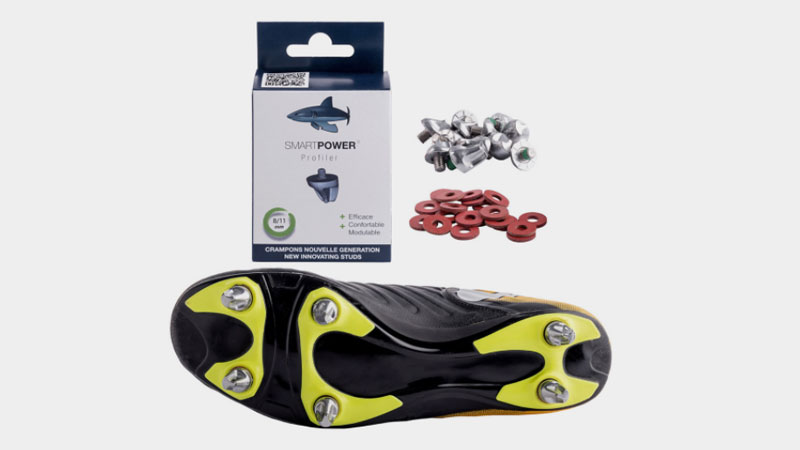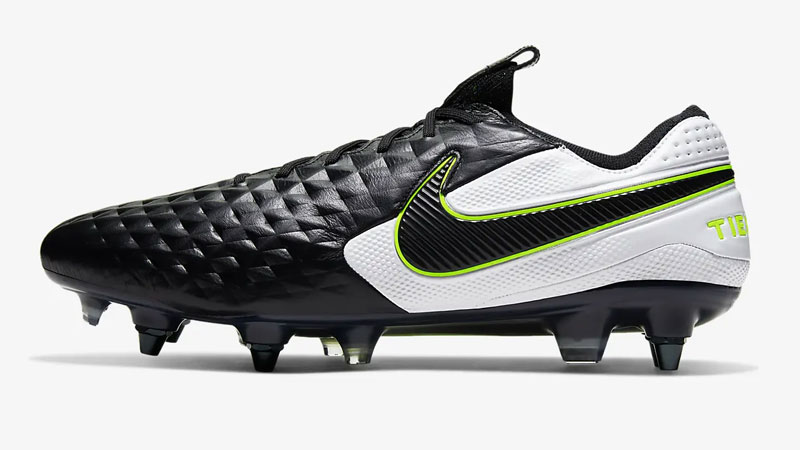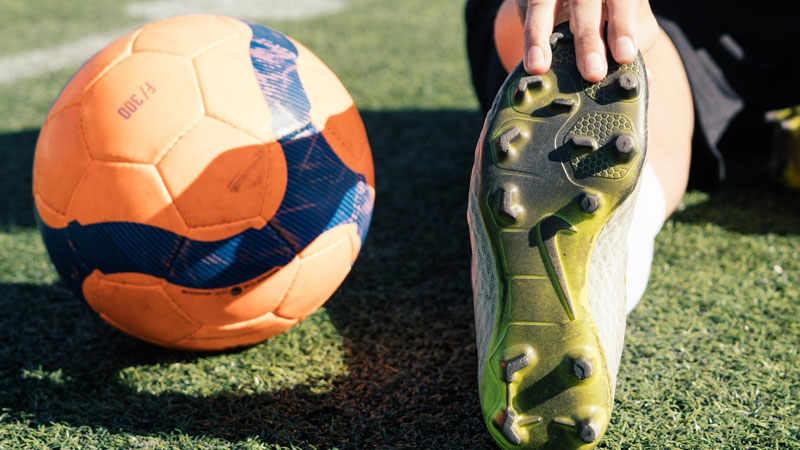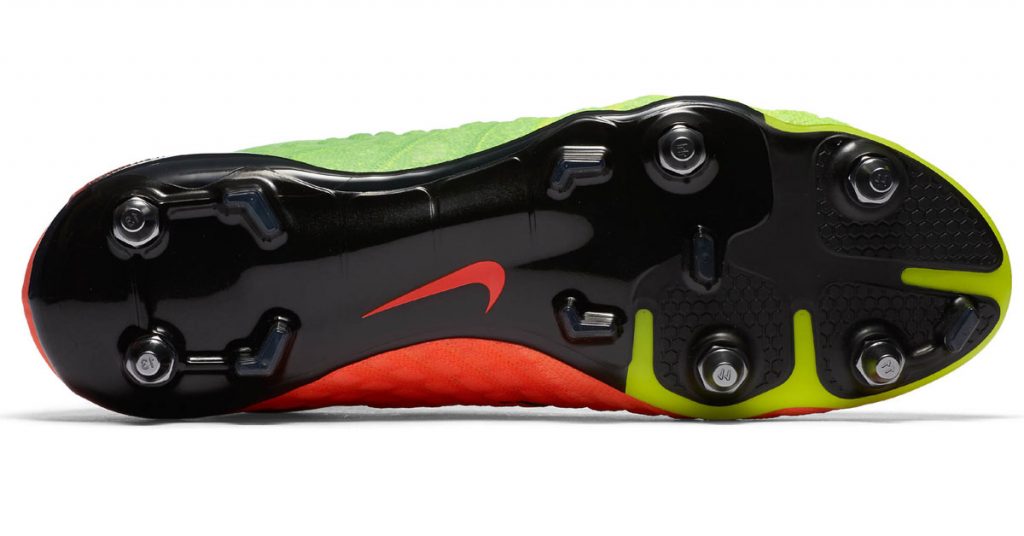Authority Soccer (authoritysoccer.com) is a participant in the Amazon Services LLC Associates Program, an affiliate advertising program designed to provide a means for sites to earn advertising fees by advertising and linking to Amazon.com. This site also participates in other affiliate programs and is compensated for referring traffic and business to them.
When you see a soccer player slipping every time they try to sprint or change direction, you can be sure they misjudged the state of the field, and they’ll need a new pair of cleats.
The commentator might say, they got short studs; in this field, they need metal cleats. Metal cleats, you might ask yourself, are they allowed in soccer?
Metal cleats are allowed in soccer as long as the referee doesn’t consider them dangerous. Metal cleats, also known as soft ground cleats, are considered legal by FIFA, and players can use them freely.
Before every game, soccer players do a field reconnaissance; they walk around the field and feel how it responds to their steps.
Some fields look softer than they are; some look harder. If it is about to rain, the players must also consider that soft ground cleats are very different than solid ground cleats.
Are metal cleats allowed in youth soccer?
For any soccer player, including the young ones, the type of cleat they’ll use is determined by several factors, like the type of grass, synthetic or natural, the field conditions, and the weather.
Some leagues don’t even accept cleats for players from 9 to 13 years because some cleat models have fewer cleats on the heels, causing severe heel pain.
In some leagues, the use of cleats is allowed, metal ones included. Still, many leagues consider metal cleats dangerous and don’t let the players use them.
There are mainly three kinds of cleats for young players:
- Molded cleats – These cleats have a set of non-removable rubber cleats, usually four on the heels and between eight and ten in the rest of the foot. This kind of cleats is widely used because they’re less dangerous, and they perform well almost in every type of field and under any weather.
- Detachable cleats – This kind of footwear can support either plastic or metallic removable studs.
- Indoor soccer – Indoor soccer cleats usually have dozens of short rubber cleats in their soles. They are most used for artificial grass, but they can perform on natural grass too.
It is recommended that young players choose cleats with many cleats to reduce heel pain and reduce the risk of ankle and knee injuries. Picking cleats with shorter studs is also beneficial for the kid’s knees and ankles, preventing injuries.
Are metal cleats allowed in high school soccer?

Just as with youth soccer, when dealing with high school soccer, the best thing to do is to consult the tournament’s regulations before getting a pair of cleats. Unfortunately, not every league follows the same rules.
In Massachusetts, for instance, it is illegal to wear soccer cleats containing any metallic part. Even if they have a tiny piece of metal at the tip.
But some leagues don’t have any problem with metal cleats.
However, there is always some confusion regarding the type of cleats more suitable for soccer. For some sports, it is allowed (and useful) the presence of a front cleat. In soccer, it is totally forbidden.
As its name indicates, the front cleat is a stud located under the tip of the shoe. This stud is useful for baseball, football, and lacrosse players to get more traction and accelerate faster and better.
In soccer, the presence of a front cleat could be hazardous to the humanity of a rival. If a player kicks the opponent with the front cleat while trying to get the ball, they can hurt them badly.
High school soccer regulations don’t mention that metal cleats are forbidden, but it is written that any equipment considered dangerous will be prohibited. It is not specified what might is deemed to be dangerous and what is not.
Metal soccer cleats tend to provoke adverse reactions to some referees, and they might consider them dangerous, and the player will have to either change the cleats or miss the game.
A detail to be observed when choosing metal cleats is that they wear down when used on hard surfaces, and eventually, they become sharp. To avoid this, wear metal cleats only on smooth surfaces.
Are metal cleats allowed in college soccer?
College soccer follows the NCAA soccer regulations, updated every year. In them, it is possible to read that to participate, every player must wear shoes.
The shoes are allowed to contain aluminum, leather, rubber, nylon, plastic cleats, studs, or bars, whether molded as part of the shoe or detachable.
However, as the National Collegiate Athletic Association indicates, players can wear any of these cleats as long as they are not dangerous. Again, the usage or not of metal cleats in a college soccer game will depend on the ref.
The NCAA determines that the referee has total authority to determine whether a shoe is dangerous or not to the players’ humanity. They can forbid a player to use such footwear.
To be sure, and even when the rules allow the use of metal cleats in college soccer, the best thing to do is to ask the authorities if metal cleats are prohibited or not before getting them.
Are metal cleats allowed in professional soccer?

In the latest version of the International Association Football Board (IFAB) rules of the game, when talking about the compulsory equipment required to participate in a professional soccer match, they mention 5 items:
- Shirt with sleeves
- Shorts
- Socks
- Shinguards
- Footwear
There is no mention of metal cleats in the entire document.
In the safety section, we read the phrase, “A player must not use equipment or wear anything that is dangerous.”
Again, what is dangerous is determined by the referee. It is the subject of interpretation, then. So it would be fair to say that metal cleats are allowed in professional soccer.
Do soccer players wear metal cleats?
Yes, they do. Metal cleats are specially designed to get a better grip on soft grounds. And as the studs are replaceable, some companies produce studs specially designed to excel in any field, not only soft soils.
Some superstars like Kylian Mbappe, Cristiano Ronaldo, and Paul Pogba use them. The unique detail about these studs is that they go oriented in the cleat’s sole according to the player’s position.
Soccer metal cleats are recommended for soft grounds because they dig easier in the soil and are also more resistant to getting clogged up and packed with mud.
Some goalkeepers use metal cleats even if they are not playing on soft grounds. The reason behind this is that they help them in dives and big leaps.
Are metal or rubber cleats better?

The purpose of soccer cleats is to provide the players with better traction to accelerate when the game requires it.
The studs placed on the shoe’s soles also help the players turn and stop abruptly; they also prevent the players from slipping.
For soccer, the studs should be short; long studs might break and provoke injuries.
However, it is impossible to determine whether rubber or metal cleats are better without considering the type of field the player will face. And not only the kind of field but also the weather.
It is not the same playing in dry weather in natural grass as under heavy rain. Basically, there are three types of cleats:
- Cleats for hard ground – Equipped with short cleats distributed on the entire sole, these footwear’s circular rubber studs are the most indicated for hard surfaces like fields with little or no grass. They ensure traction and, at the same time, don’t put too much pressure on the feet.
- Cleats for firm ground – These kinds of cleats are perfect for soils that are not too hard or too soft. Firm-ground cleats’ main characteristic is that the majority (when not every stud) is bladed instead of conical or circular.
- Cleats for soft ground – As we’ve seen above, soft ground cleats have almost always replaceable studs, generally metallic studs but also plastic.
So, answering the question, are metal cleats better than rubber or plastic cleats? It depends; for some kind of fields, they are; for some others, they don’t.
Best metal cleats
When thinking about the best metal soccer cleat, we need to consider its performance on soft grounds and the quality of the materials used, and, last but not least, its looks.
The soccer cleats that gather all those requirements are the Nike Hypervenom Phantom.
These cleats have waffle-textured skin made of two layers—a mesh woven into a polyurethane layer. This mixture makes the footwear flexible and breathable.
This cleat also counts with Nike’s ACC technology, All Conditions Control. This feature makes the shoe almost impenetrable to water, for it suffers almost zero modifications under different weathers.
The shoe is light; it weighs only 7.6oz, making them one of the market’s lightest cleats.
This cleat’s bottom offers a unique feature. The sole is made of very rigid glass nylon and a separate stud plate. The plate has two molded bladed studs in the heel and four in the forefoot.
The Phantom model also includes six replaceable metal studs. The stud wrench is included when purchasing the shoes.


